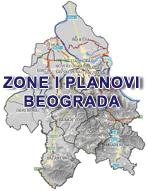An Underground Park – The Lowline Park

An Underground Park – The Lowline Park
Some of us may live in cities where space is not in demand, New York City does not qualify for this category. Designers in such crowded metropolises are becoming more innovative in finding room for public spaces and parks. Traditionally we have studied how to design parks on the ground, on a wall, a rooftop, or in an interior, but without natural light, The Lowline is a concept that will completely change our vision and perception of parks.
A number of factors have influenced the idea to transform a former trolley terminal, buried under the streets of The Lower East side into NYC’s first underground park. The growing need for public space, the lack of vacant land in the crowded city, but of course, nothing happens without an idea that makes you laugh at first. The trolley terminal lying in decay for more than fifty years under Delancey Street, in The Lower East side, was the perfect spot. James Ramsey and Dan Barasch launched the project about a year ago and as you can imagine it is becoming increasingly popular. The name, Lowline, came from theassociation people made to the Highline Park. “An underground High Line for the Lower East Side, kind of like… a Lowline.”
So how do you make a park without natural light?
The latest upgrade of an existing technology is applied. It extracts natural light from the top and transfers it underneath the surface. This system consists of solar-collective dishes, accumulating light, transferring it through fiber-optic cables, and dispersing it underground through installed ceiling panels serving as diffusers. The wavelengths that reach the underground provide proper conditions for photosynthesis, which means all kinds of vegetation, can be grown.
How big will the future park be?
For a city such as New York even 1.5 acres is a large enough site. This is exactly the size of the terminal, which is as big as Gramercy Park. Similar to the birth of the High Line idea, the designers fell in love with the site because of its sense of neglect, with old cobblestones, steel columns, vaulted ceilings, about 6 meters in height, railway tracks, and the proximity to the JMZ subway. Without doubt it is the perfect location and conditions for a park!
If you seriously think about it, and you should because the designers are not joking, an underground park will give visitors the opportunity to use at any time during the year. There is a considerable possibility that the project will influence the urban rhythms and habits in the Lower East side and eventually the future of parks in metropolitan areas.
These kind of revolutionary projects need tremendous funding and support to succeed. After launching a fundraising campaign at Kickstarter, the design team established an exhibit, “Imagining the Lowline” which opened on September 15th. They constructed a mock-up of the solar technology demonstrating the concept of the “remote skylight” in an abandoned warehouse on Essex Street, attracting the attention of supporters and skeptics. The exhibition was part of “Experiments in Motion” an initiative sponsored by Audi of America and Columbia University Graduate school of Architecture, Planning, and Preservation (GSAPP). The student work presented, included a grid map of thesubway in NYC showing the potential of the underground spaces and the Lowline as a futuristic use.
The campaign does not stop here. They are launching events, promotions, working with the community, and governance to achieve their goal. If you are interested in supporting the project or joining the team you can by following thelink.
Below: LowLine: An Underground Park on NYC’s Lower East Side
For more info: http://landarchs.com/lowline-park/
Fortunately or unfortunately, nowadays, urban life conditions cause these kinds of ideas to emerge. In the overcrowded cities where millions of people want to live there seems to still be space for public use. We just need to look around and see the invisible. Projects like the Lowline can provide insight to other possible ways of re-using abandoned spaces for community spaces and improved urban living.
Are you ready for an “underground” walk?
Article written by Yuliya Georgieva








Коментари
Постави коментар
Ovde možete ostaviti vaš komentar i sugestije